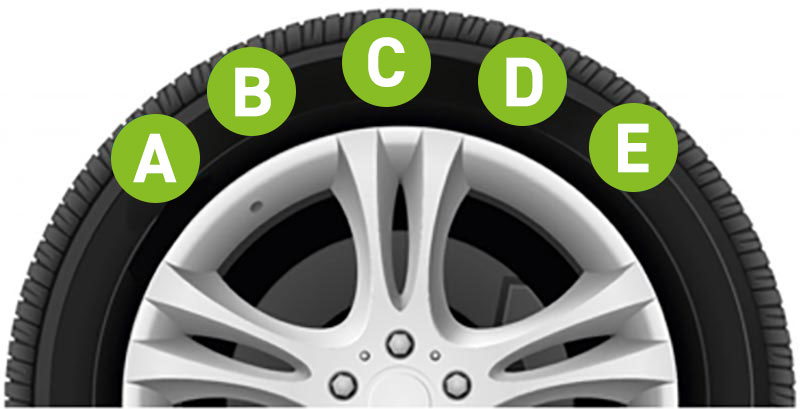Tyre Maintenance
Tyres are the only part of your car in contact with the road so maintaining them is vital to safe acceleration, braking, steering and cornering.
- Comply with the speed rating and load index
- Driving style and speed directly affect tyre life so stick to speed limits and safe manoeuvres
- Pressures should be regularly checked on cold tyres – including your spare
- Replace tyres worn to the tread wear indicators, even if it’s only a part of the tread
- If an impact or a puncture occurs make sure the inside of the tyre is checked as well
- Never park over patches of oil, solvents etc, as this can cause tyre damage
- When switching from summer to winter tyres, or vice versa, you must change all four tyres. DO NOT MIX
- Get regular tyre checks carried out by a reliable dealer
Tyre Age
Premature tyre ageing affects the safety of the tyre and increases the risk of failure.
All tyres display a coded date of manufacture and these codes are usually located in a ‘window’ on the tyre sidewall. The first two digits represent the week and the second two the year of manufacture.
Anti-oxidising chemicals in tyres can slow down the rate of ageing but tyres need to be in use to slow down this process. Low mileage older cars are at risk from premature ageing – as motorists assume if they can see plenty of tread they are roadworthy. This type of tyre ageing can be identified by small cracks in the sidewall.
In most circumstances tread depth is the best indication of when tyres should be replaced – as tread generally wears out before the ageing effect becomes a problem.
If you’re not sure how old your tyre is or you have a tyre six years or older – this includes spare tyres – you should get them checked out by a reliable dealer.

